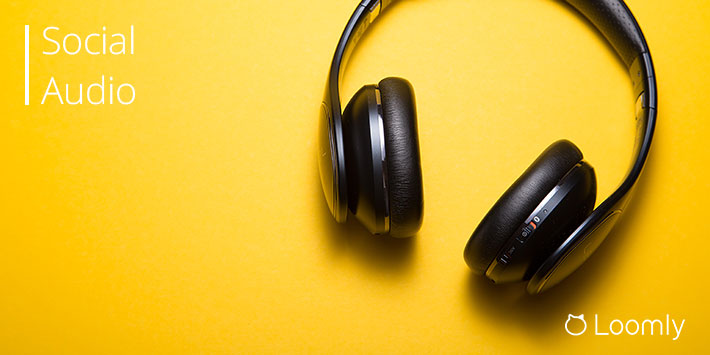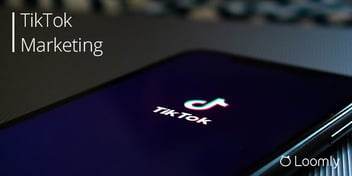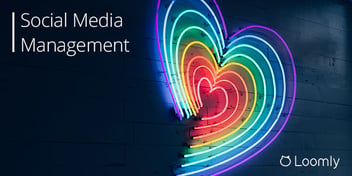Social Audio: How Your Brand Can Conquer This New Growth Territory
Everyone believed social audio to be a fad when it first launched during the pandemic. The doubters had valid reasons since several trends appeared and vanished around the same time.
But with platforms like Clubhouse having a valuation of $4 billion and new social audio apps continually launching, social audio seems to be the future of marketing.
You might be wondering if it’s the right fit for your brand or if you need to include it in your marketing strategy.
The answer to both these questions is a YES.
You can build a genuine and more personal connection with your audience through social audio. Live interactions also make your brand more human and accessible.
So how can you leverage this lucrative format to take your brand to greater heights?
It’s a trick question to answer due to the lack of data and existing strategies for social audio platforms. But we’ve got you covered. In this guide, you’ll get a comprehensive plan to tap into the new world of social audio by discovering:
- What social audio is
- What makes social audio unique
- Why your brand should care about it
- Example of successful social audio strategies
- How your brand can take advantage of social audio
What is Social Audio?
Social audio is similar to a group voice call. Essentially, it allows you to have real-time conversations with your audience or anyone present in a “room”. Think of a podcast – except it’s happening live with the ability to have two-way communication.
Clubhouse, a social audio platform, defines itself as “a space for casual, drop-in audio conversations.”
Social audio is the latest component of social media, following on from text, images, and videos. It’s an audio live stream where you can choose moderators, speakers, and attendees.
What Makes Social Audio Unique
Social audio apps stand out significantly from the existing social media platforms. Here are some factors exclusive to social audio:
Numbers
Here are some mind-boggling stats surrounding digital audio:
- Clubhouse has 10 million weekly active users and is valued at $4 billion in just one year.
- 68% of the US population listens to online audio each month.
- 2% of US adults are using Clubhouse.
- The average time listeners spend on audio platforms is 16 hours and 14 minutes weekly.
- Digital audio will account for 7% of total media time per day in 2021 (up from 11% in 2020).
Demographics
Who’s actually listening to social audio?
Turns out, digital audio has a diverse audience ranging from age 12 to 55+:
- Age 12 to 34 = 86%
- Age 35 to 54 = 72%
- Age 55+ = 46%
You can deduce a detailed picture of the audience of social audio from this Clubhouse data:
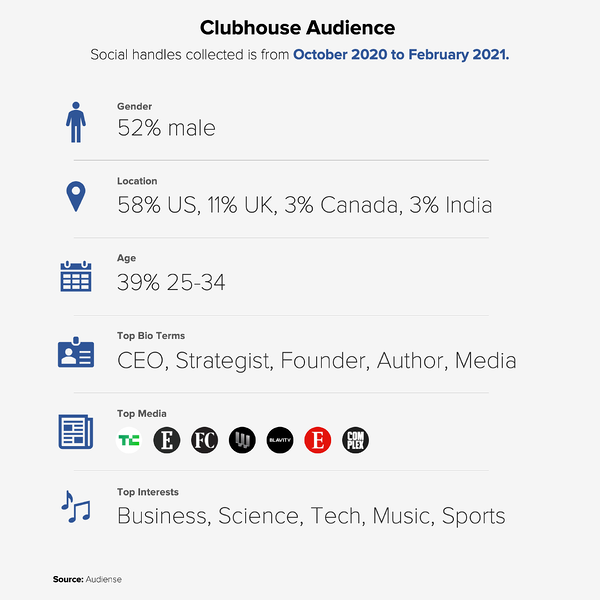
Source: Audiense
The audience is predominantly male (52%), with more than half of the audience from the US (58%), and the top interests of the audience being business, science, tech, music, and sports.
Most popular platforms
According to Jeremiah Owyang, there are over 30 social audio platforms. However, the most popular platforms are:
- Clubhouse
- Twitter Spaces
- Facebook Audios
- Instagram Live Rooms
- Spotify Greenroom
- Discord Stage Channels
- Reddit Talk
Most popular accounts
The most popular accounts or hosts on social audio platforms are:
- Tiffany Haddish
- Felicia Horowitz
- Marc Andreessen
- Chris Lyons
- Jared Leto
- Van Jones
- Andrew Chen
- Josh Constine
The following chart shows the most followed accounts on Clubhouse:
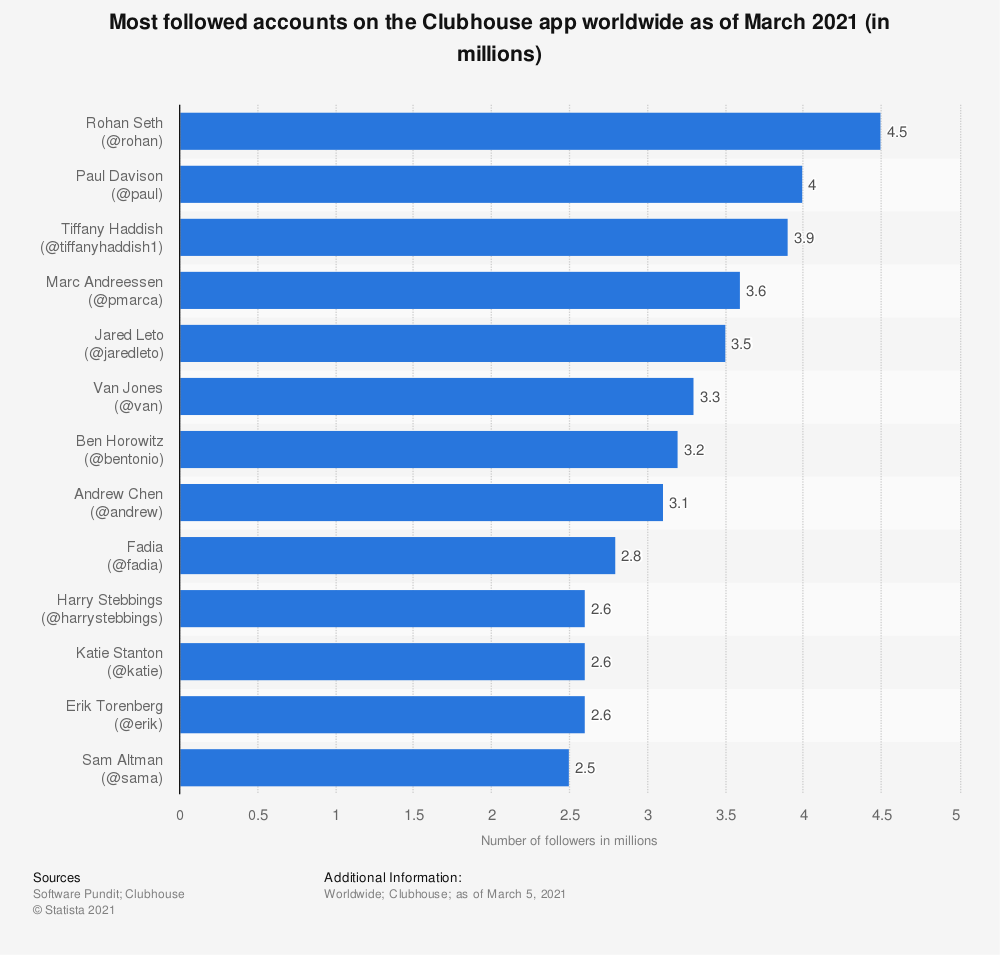
Source: Statista
Why Your Brand Should Care About Social Audio
If the stats have not convinced you already, here are some more reasons why your brand should care about social audio:
1. Lower competition
“Don’t try to be the best, be the first.” – Jack Ma
Although you should try to put the best content out there, it doesn’t hurt to capture the opportunity of being early. Here’s a timeline of the release dates of popular social audio platforms:
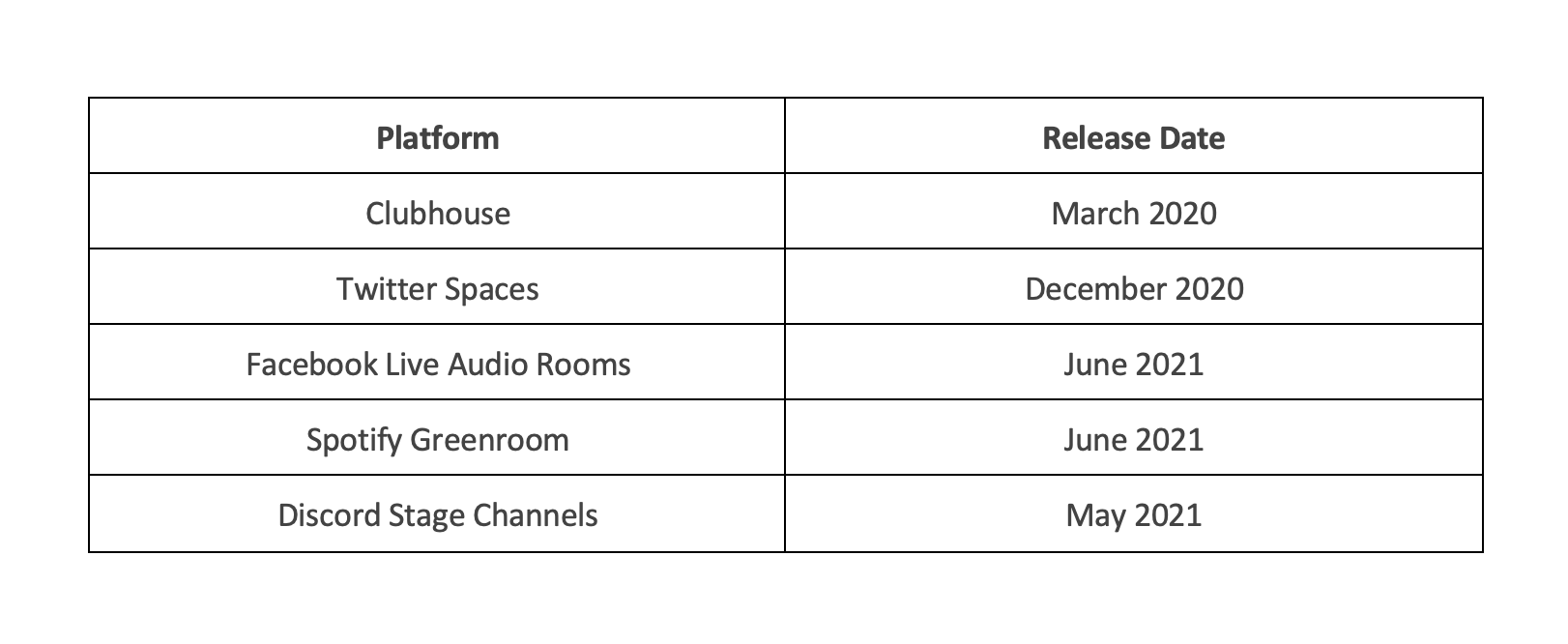
And Reddit is yet to release Reddit Talk.
Its the best time to get a headstart on audio platforms since:
- Competition is low
- Audience interest is high (new feature)
- Organic reach is high
2. Higher bandwidth communication
Text messages don’t provide the emotions and nuances that humans require, especially during isolation.
According to Jeremiah Owyang:
Social audio is the “goldilocks medium – not too much, not too little. It represents an opportunity for social connection and empathy without the downsides of video.”
With audio, you can express emotions, which is very hard to do through a caption or a blog post. Your audience can hear the excitement, interact with you in real-time, ask questions and thus, connect with your brand better.
3. Vibrant feel
While monthly podcast listeners have grown 61.5% in the last three years, it remains a one-way communication channel. In contrast, audio social media channels provide a chance for live two-way conversations.
It’s very similar to attending a live show. You can find many rooms open for all or at least have a Q&A round with their audience towards the end on social audio apps.
And since it’s live, people have to be really “present” to miss nothing. As a result, you have the complete attention of your audience compared to any other channel where the attention received is passive.
4. No ad saturation yet
According to a survey, 74% of people think there are too many ads on social media. Before every YouTube video, there’s an ad. After every three Instagram Stories, there’s an ad. And this goes on for every social media platform.
With such frequent interruptions, it’s difficult for your audience to keep their attention on the content.
Ari Applbaum, vice president of marketing of Audioburst, says, “All other social media focus on building the base, and then once you get to critical mass and you have enough content that could be monetized, then you bring in the ads.”
Since social audio platforms are still in the early stage, ads have not yet been rolled out. You can use this time to capture your audience’s attention without any unwanted interruptions of ads.
5. Receive audience feedback
One of the ways to improve your product or service is with audience feedback. They’ll tell you exactly what they want. And the ability to interact with your audience in real-time unlocks the opportunity of receiving live feedback.
You can use these platforms to test new ideas, gather feedback on existing services or products, and track consumer sentiment.
Examples of Successful Social Audio Strategies
Social audio platforms like Clubhouse have boosted many businesses, especially those of small creators. There have been several life-changing stories about people getting more clients and more recognition. Let’s take a look at three examples of successful social audio strategies:
1. Chris Voss – From Clubhouse to Own Podcast Show
Chris Voss, an ex-FBI hostage negotiator, had already published a book before Clubhouse launched. But his activity on Clubhouse exponentially increased his reach across all his social channels:
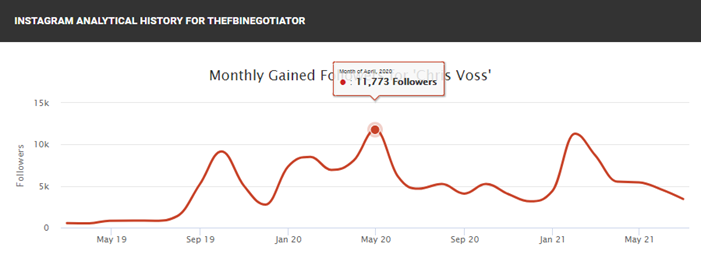
Source: Social Blade
His Instagram data on Social Blade reveals the highest spike in his followers in April 2020, just after starting his Clubhouse account. He currently has over 100,000 followers on Clubhouse and regularly hosts sessions teaching people negotiation techniques.
In September 2020, Chris came out with his own podcast show called “The Chris Voss Show,” which received a positive response from his audience.
2. Slice – Delivering Pizza
Slice, an online food ordering platform, hosted a dating show on Clubhouse on Valentine’s Day. Anyone who left the show without a partner received a pizza from Slice:
Let
be your Valentine this year. We'll be joining the lonely hearts edition of nyu girls roasting tech guys tonight at 10PM EST. Don't worry if you get rejected, because pizza always says YES. https://t.co/nyUfd0U3SK
— Slice (@slice) February 15, 2021
3. Michael Stelzner – Turning Pandemic-Affected Business Around
Michael Stelzner, CEO of Social Media Examiner, joined Clubhouse when his business was severely affected by the pandemic. His conference business went down in sales, and the pandemic was a hard hit for them.
Pre-pandemic, they were able to bring in 7000 attendees every year. With Michael’s activity on Clubhouse, their official Instagram page crossed 100,000 followers, and Michael’s Clubhouse account stands at 33,000.
How Your Brand Can Take Advantage of Social Audio
You have to include social audio in your marketing strategy, just like any other social media platform. Follow this 7-step framework to take advantage of social audio:
1. Define your business goals
The type of content you plan to speak on social audio platforms will depend on your business goals. Your business goal can be to:
- Build thought leadership
- Generate leads
- Drive sales
- Grow brand awareness
- Market an upcoming launch
It’s essential to define a clear goal so that you can track accurate KPIs later on. Having goals will also ensure structured audio sessions instead of a session ending with no clear resolution.
2. Develop an editorial concept
You should base your social audio strategy on a solid plan and guidelines. Since the sessions are live, there’s a massive risk of things going downhill or the session being all over the place.
By developing an editorial concept, you define your:
- Format: Are you going to host one-off sessions or design a series to form a show? Will your focus be fireside chats with experts or mini masterclasses? Or a combination of all?
- Target audience: Defining your audience will help you in the type of content you create and also in choosing the platform later on.
- Topics: What are you going to talk about and not talk about? What will be the themes and subjects?
- Style and tonality: Tonality is what differentiates drop-in audio chat from other social media. Make sure you give time to define your brand voice for such platforms.
Also, create a structure for your upcoming sessions. You don’t have to script everything, but it must have a solid plan of action. Having an outline handy will also help the hosts of your sessions.
You can also think of developing your social audio strategy in a series of episodes and build your own “show”. To do this, you need to have a central concept and tie episodes around it.
3. Pick a platform
Live audio content requires a lot of time investment. You can’t think of having “omnipresence” across all audio platforms like you would in other social media platforms.
So, carefully selecting the platform you’ll be investing time in is essential. You can choose the platform based on:
- Demographics: Based on your target demographics, the platform best suited for you will vary.
- Existing followers: If you already have a following on a platform like Twitter or Instagram, you can leverage that to get a headstart.
- Scalability: Clubhouse allows a maximum of 5000 participants per room, which might be a problem if you have a larger audience. On the flip side, Clubhouse can be the best place for you if you want to create a tight-knit audience with high engagement.
4. Host sessions
Once you have laid down your business goals, built a solid show concept, and selected the platform, it’s showtime.
Host sessions around a central concept and create rooms discussing sub-topics. For example, if your central concept is “startup funding”, you can have sessions like “pitch practice”.
The purpose of every session should be to educate or entertain rather than hard selling.
5. Engage with your audience
Real-time engagement with your audience is the unique advantage social audio platforms provide. Grab this opportunity to:
- Humanize your brand
- Make your brand appear more accessible
- Invite feedback
- Answer questions about your product or service
Audience engagement is getting difficult on other platforms as the algorithm decides the reach of your posts. But with audio platforms, you have the complete attention of your audience.
6. Measure success
Just like any other campaign, end metrics are what define success. Since you’ve already set clear business goals before your audio campaign, it’s easy to track the results.
You can also use the collected audience data in future campaigns to create more effective strategies.
Also, analyze the sentiments of your audience by analyzing transcripts of sessions. The two-way conversations will help you determine if your audience has positive or negative emotions about your product or service. Pay special attention to the tone of your audience and their expression of points.
7. Rinse and repeat
Based on your analysis, you can tweak your social audio strategy. If the topics of your sessions are not engaging enough, experiment with different ideas.
The key to social audio platforms is consistency. Unlike other platforms where posts can exist for a longer time, social audio sessions are live and end if you don’t record. You’ll have to keep making appearances (on your channel and others’ channels) to achieve your business goals.
There’s no “viral post” when it comes to social audio. It’s a slow process, but the upsides like engagement and connection with your audience are too lucrative to leave.
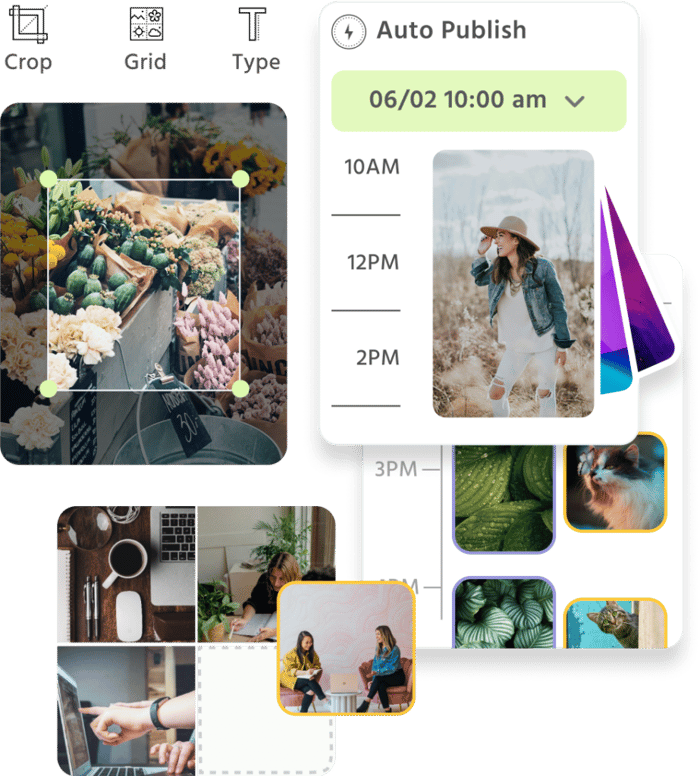
Manage all your social media accounts in one place.
Craft, schedule, & auto-post content to all your social channels, then track analytics and manage interactions from a single, easy-to-use dashboard.
Social Audio in a Nutshell
Social audio, or drop-in audio chat, is the future of social media. To tap into a wider audience and keep your current audience engaged, your brand needs to leverage this latest form of communication.
Still in its early days, social audio can create an intimate connection with your audience and let you receive direct and honest feedback from them. You can take advantage of social audio by following this 7-step framework:
- Define your business goals
- Develop an editorial concept
- Pick a platform
- Host sessions
- Engage with your audience
- Measure success
- Rinse and repeat
